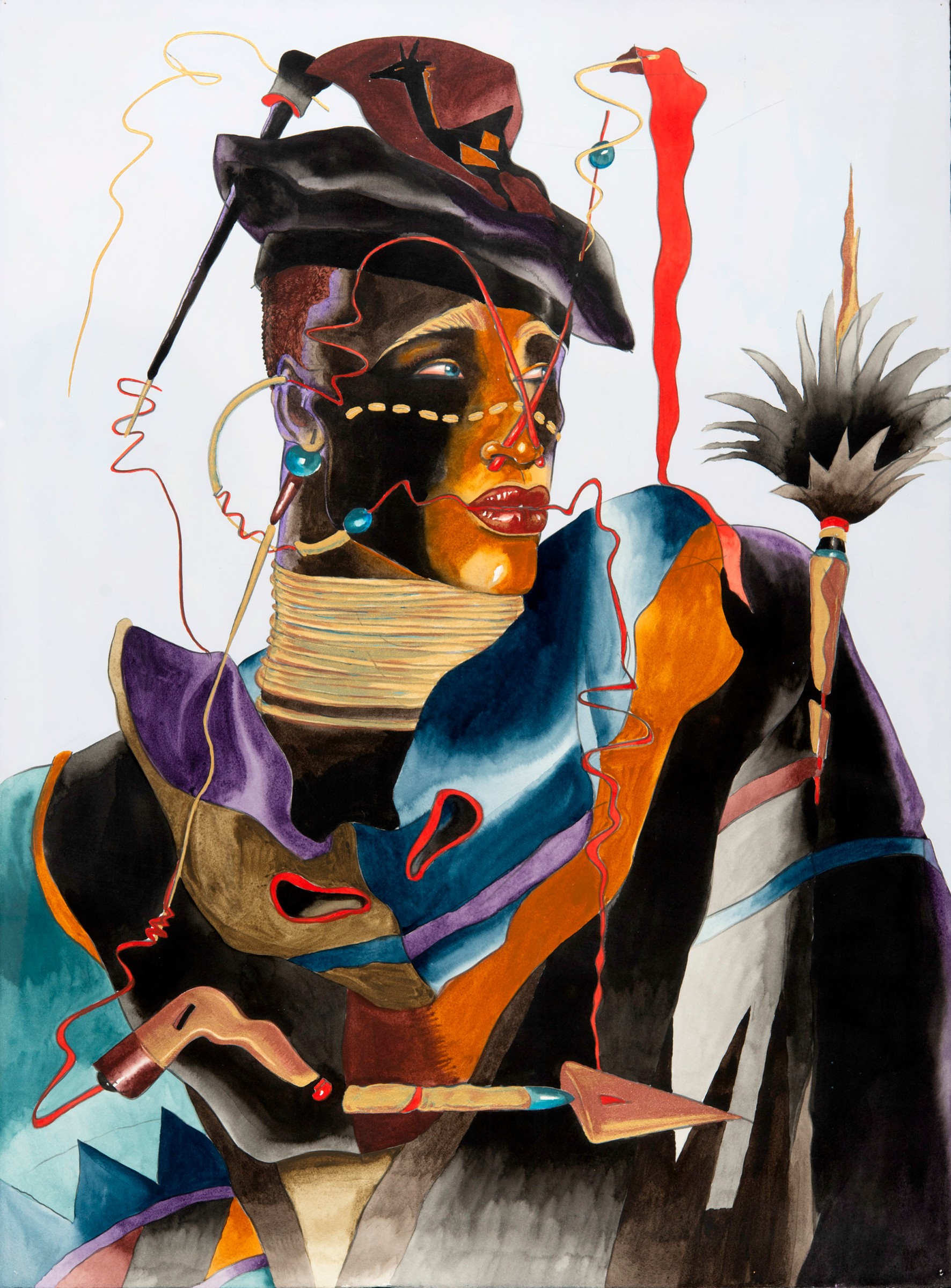Grace Jones' pioneering gender play and Afrofuturism
- Text by Miss Rosen
- Photography by Richard Bernstein (main image)

Hailing from Jamaica, Grace Jones is a true iconoclast: a rebellious pioneer who set the worlds of music, fashion, and film ablaze with aesthetics that defied categorisation, appropriation, or co-option by industries that have long cannibalised marginalised communities.
In the new exhibition at Nottingham Contemporary, Grace Before Jones: Camera, Disco, Studio, curators Cédric Fauq and Olivia Aherne offer a multifaceted portrait of the renegade who turned the mainstream upside down with her refusal to be pigeonholed by any singular quality.
Featuring 100 works by some 50 artists including Anthony Barboza, Antonio Lopez, Keith Haring, Robert Mapplethorpe, and Jean-Paul Goode, Grace Before Jones is organized into 13 sections that explore her approaches to gender, sexuality, performance, race, and cybernetics throughout her career.
“The incredibly poignant thing about this exhibition is that everything she was doing in the 1970s, ‘80, and early ‘90s is still relevant today”,” says Aherne. “It still feels so fresh and experimental, even though Grace was thinking about things like Afrofuturism back in the ‘80s, at a time when these ideas were first being developed and hashed out.”
Bringing together artworks, archival material, film, fashion, design, and music, Grace Before Jones reveals how Jones subverted and reframed Western archetypes of Black women. “Grace played with non-binary, not being overtly feminine or masculine, and not feeling like she needed to define or speak on those provocations, but just to inhabit them,” Aherne says.

Antonio Lopez, LUI Magazine (cover), Grace Jones, 1979, © The Estate of Antonio Lopez and Juan Ramos
Jones subverted paradigms of Western cultural hegemony from the very start. Age 18, at the beginning of her career in the mid-1960s, Jones moved to New York City to model with the prestigious Wilhelmina Modelling agency. Her dark skin, African facial features, and natural hair didn’t fit the aesthetics of Blackness that white America sought to promote. So, Jones decamped to Paris in 1970, where her striking looks made her a darling among a radical new group of ready-to-wear fashion designers, including Yves Saint Laurent, Claude Montana, and Kenzo.
Jones began collaborating with Afro-Puerto Rican artist Antonio Lopez, and became affectionately known as one of “Antonio’s Girls,” along with her roommates, fellow models Jerry Hall and Jessica Lange. The women were regulars at Club Sept, Paris’s hottest discotheque, introducing a new era of sex, fashion, and disco to the jet set. Nightclubs quickly became an ideal setting for Jones, who transformed the dance music scene. She produced disco and dub classics like ‘La Vie en Rose,’ ‘Pull up to the Bumper,’ and ‘My Jamaican Guy’ throughout the 1970s and ‘80s.
Her creativity, innovation, and spontaneous energy made her the perfect muse for artists such as Warhol, Haring, and Mapplethorpe. “Grace challenged people,” Aherne states. “She pushed everyone who was around her to think differently about images that they were producing whether that be returning the gaze in photography or speaking back in her music.”
“There’s something important about taking a cue from that spirit today and not feeling like we have to explain ourselves or occupy certain categories.”

Ming Smith, Untitled (Grace Jones Ballerina), 1975, courtesy of the artist and Jenkins Johnson Gallery, New York and San Francisco

Richard Bernstein, Grace Jones Mask for Warm Leatherette, 1980, courtesy The Estate of Richard Bernstein

Richard Bernstein, October issue of Andy Warhol’s Interview Magazine, 1984, courtesy The Estate of Richard Bernstein

Richard Bernstein, Grace Jones photographs for On Your Knees, 1979. Eric Boman courtesy of The Estate of Richard Bernstein

Antonio Lopez, Personal Study, Angelo Colon, 1983 © The Estate of Antonio Lopez and Juan Ramos
Grace Before Jones: Camera, Disco, Studio runs until 2 January 2021 at Nottingham Contemporary.
Follow Miss Rosen on Twitter.
Enjoyed this article? Like Huck on Facebook or follow us on Twitter.
Latest on Huck

Clubbing is good for your health, according to neuroscientists
We Become One — A new documentary explores the positive effects that dance music and shared musical experiences can have on the human brain.
Written by: Zahra Onsori

In England’s rural north, skateboarding is femme
Zine scene — A new project from visual artist Juliet Klottrup, ‘Skate Like a Lass’, spotlights the FLINTA+ collectives who are redefining what it means to be a skater.
Written by: Zahra Onsori

Donald Trump says that “everything is computer” – does he have a point?
Huck’s March dispatch — As AI creeps increasingly into our daily lives and our attention spans are lost to social media content, newsletter columnist Emma Garland unpicks the US President’s eyebrow-raising turn of phrase at a White House car show.
Written by: Emma Garland

How the ’70s radicalised the landscape of photography
The ’70s Lens — Half a century ago, visionary photographers including Nan Goldin, Joel Meyerowitz and Larry Sultan pushed the envelope of what was possible in image-making, blurring the boundaries between high and low art. A new exhibition revisits the era.
Written by: Miss Rosen

The inner-city riding club serving Newcastle’s youth
Stepney Western — Harry Lawson’s new experimental documentary sets up a Western film in the English North East, by focusing on a stables that also functions as a charity for disadvantaged young people.
Written by: Isaac Muk

The British intimacy of ‘the afters’
Not Going Home — In 1998, photographer Mischa Haller travelled to nightclubs just as their doors were shutting and dancers streamed out onto the streets, capturing the country’s partying youth in the early morning haze.
Written by: Ella Glossop